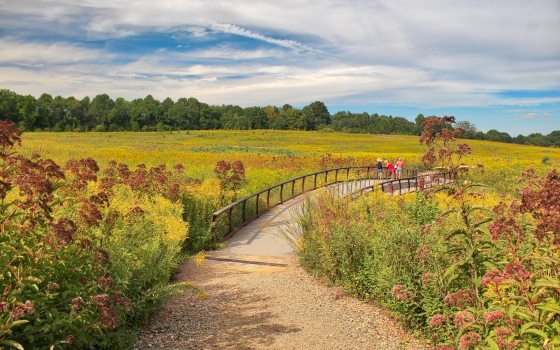In March, our staff found a pair of Pileated Woodpeckers excavating a nest cavity in a large dead tree. We were lucky enough to capture the event on film and have been watching (and filming) their nesting habits ever since. The Pileated Woodpecker relies on the presence of large dead trees, or snags, in the woods for their nesting, feeding and roosting sites. At Longwood Gardens, we retain these dead snags as a part of our sustainable woodland management strategy--striving for 5-10 snags per acre of woods. Not only are these dead trees important to the Pileated Woodpecker, but their yearly abandoned nests function as important future habitat for other forest species like flying squirrels, wood ducks, and other insects, birds and animals. Once these large dead trees fall to the ground, they continue to provide habitat for many other species, such as insects, toads, and salamanders. The downed, decaying wood is the future soil of the forest. Without this decaying woody matter, many of the nutrients and fungal components of the forest floor would not develop sufficiently to maintain healthy forest conditions. A healthy forest is a system of finely tuned relationships between the soil, plants and animals. The successful nesting of the woodpeckers is an annual reminder of one such functioning relationship. Music by General Fuzz.

Pileated Woodpecker Nesting at Longwood Gardens
By Tom Brightman, on
Related Articles
-
Happy Tenth Anniversary to the Meadow Garden

Happy Tenth Anniversary to the Meadow Garden
Ten years ago, we opened the gates to an expanded garden—and one that’s markedly different from every other garden at Longwood.
By Lea Johnson, Ph.D., on September 4, 2024 -
A Beneficial Burn Experience

A Beneficial Burn Experience
Prescribed burns, which occur in such locations as our Meadow Garden, are a way in which we can maintain the meadow’s health by rejuvenating its native plant communities and suppressing woody vegetation that would otherwise quickly overrun it.
By Samantha Paine, on July 3, 2024